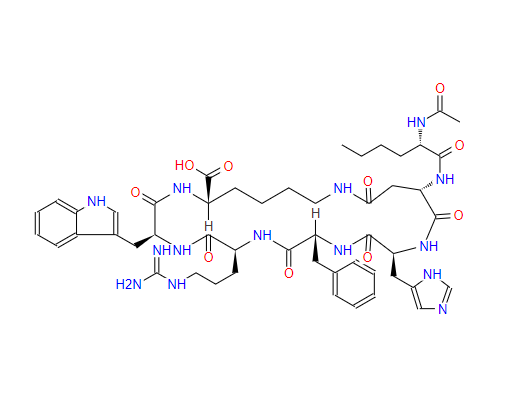With its unique mechanism of action, clinical applications of Brmelanotide have gradually expanded from its initial use in sexual health to metabolic diseases such as obesity and type 2 diabetes, becoming one of the few peptide drugs that can simultaneously address both metabolic regulation and sexual health improvement.
1.Sexual Health Field
Brmelanotide is the first drug approved for the treatment of both male erectile dysfunction (ED) and female hypoactive sexual desire disorder (HSDD) in the world, and its efficacy and safety have been validated through multiple Phase III clinical trials:Male Erectile Dysfunction (ED):
For patients with mild to moderate ED, especially those who are ineffective or intolerant to PDE5 inhibitors such as sildenafil (Viagra), Brmelanotide can significantly improve erection hardness and duration. A clinical trial involving 300 ED patients showed that twice-weekly injections of Brmelanotide(1.75 mg) for 12 weeks resulted in a 40% increase in the International Index of Erectile Function (IIEF) scores from baseline, with an effective rate of 68%, and no significant side effects such as hypotension or visual disturbances (common adverse effects of traditional PDE5 inhibitors).
Female Hypoactive Sexual Desire Disorder (HSDD): HSDD is the most common sexual dysfunction in women, and traditional treatment options are limited. Brmelanotide works by activating central MC4R, improving neural signals related to sexual arousal, thereby enhancing sexual desire and satisfaction. In a Phase III trial targeting premenopausal women with HSDD, patients using Brmelanotide showed an increase of 2.1 times per month in "sexual activity frequency" compared to the placebo group, a 35% improvement in "sexual satisfaction score," and no adverse effects on menstrual cycles or hormone levels.
2.Field of Metabolic Diseases
In recent years, with in-depth research into the metabolic regulation mechanisms of MC4R, the potential of Brmelanotidein the treatment of obesity and type 2 diabetes has gradually been explored:
Obesity treatment: In a phase II clinical trial involving overweight/obese patients (BMI ≥28 kg/m²), patients received daily subcutaneous injections of Brmelanotide(0.5-1.0 mg). After 24 weeks, the average weight loss was 6.2 kg, corresponding to 7.1% of baseline body weight, and the abdominal visceral fat area was reduced by 12.3% — while this effect is slightly lower than that of semaglutide (10% weight loss), Brmelanotidehas a milder appetite-suppressing effect, and the incidence of gastrointestinal side effects (such as nausea and vomiting) was only 15%, significantly lower than semaglutide (30%-40%), resulting in higher patient tolerance.

Adjunctive treatment for type 2 diabetes: For patients with type 2 diabetes combined with obesity, bumevetide can aid in weight loss while improving insulin sensitivity and reducing hepatic glucose output, thereby helping to lower blood sugar levels. Clinical data show that patients treated with bumevetide in combination with metformin experienced a 0.6%-0.8% reduction in glycated hemoglobin (HbA1c) from baseline, a 1.2-1.5 mmol/L decrease in fasting blood glucose, and a very low risk of hypoglycemia (with no hypoglycemia cases reported when used alone).
3.Other Potential Applications
Diseases related to skin pigmentation: Brmelanotide activates MC1R to promote melanin synthesis and is currently being studied for the treatment of vitiligo (by inducing repigmentation in affected areas through local injection). Preliminary clinical data show that local use of Brmelanotide can achieve a 30%-40% repigmentation rate in vitiligo lesions.
Neuropathic pain: MC4R is abundantly expressed in the dorsal horn ganglia of the spinal cord. Brmelanotidecan inhibit pain signal transmission by activating this receptor. Animal experiments have confirmed its effectiveness in alleviating postherpetic neuralgia and diabetic neuropathic pain, and it is currently in Phase I clinical trials.
Against the backdrop of the rising global incidence of obesity and type 2 diabetes, glucagon-like peptide-1 (GLP-1) receptor agonists have become a key focus in the treatment of metabolic diseases due to their dual effects of lowering blood sugar and promoting weight loss. Brmelanotide(formerly known as PT-141), as a member of this family with unique mechanisms and potential for multiple applications, not only breaks the traditional boundaries of GLP-1 drug applications but also demonstrates differentiated value in areas such as sexual health and metabolic regulation, providing patients with wholly new treatment options.
Post time: 2025-09-29
